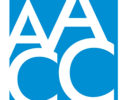Report roundup
By AACC 21st Century Center Staff
September 20, 2018
A monthly roundup of reports of interest to the community college sector.
Here are three reports you should know about this month.
- Many state community college systems are implementing guided pathways initiatives. In Tennessee, the community colleges under the Tennessee Board of Regents (TBR) are probably the furthest along in implementing guided pathways reforms, according a report from the Community College Research Center (CCRC). All 13 colleges are implementing practices to help students choose and enter a pathway program, map that pathway to the student’s end goals, keep students on their path and ensure that students are learning. The report highlights promising practices, such as how some colleges are using meta-majors, or academic focus areas, as a framework for exploration, and how several colleges, have advisors work closely with financial aid offices to ensure that students are only registering for courses required for their major. The report also examines the colleges’ progress in closing equity gaps by race/ethnicity and age, and “critical next frontiers.”
- CCRC also partnered with MDRC to produce a guide on college course placement. Traditional placement tests misplace substantial numbers of students, leading to many students going into developmental education when they could have been successful in college-level courses. Multiple measures placement systems that use alternative measures alongside the traditional tests could provide more accurate results and better student outcomes. This guide draws on lessons from 10 Minnesota and Wisconsin colleges that piloted multiple measures systems for student placement.
- About 14 million college students work while enrolled. Many don’t have any other option. And students enrolled in associate degree programs are more likely to work full time than students enrolled in bachelor’s degree programs. What are the implications? According to a new report from Georgetown University’s Center on Education and the Workforce, for low-income workers, who often work more than 15 hours a week in addition to attending classes, the chances of completing a degree or credential decrease. “For example, only 22 percent of low-income working learners complete a bachelor’s degree within six years, compared to 37 percent of higher-income working learners,” the report’s authors say. And the jobs these working learners hold often do not tie into their field of study, meaning they may leave college with no experience tied to their long-term career objectives.



